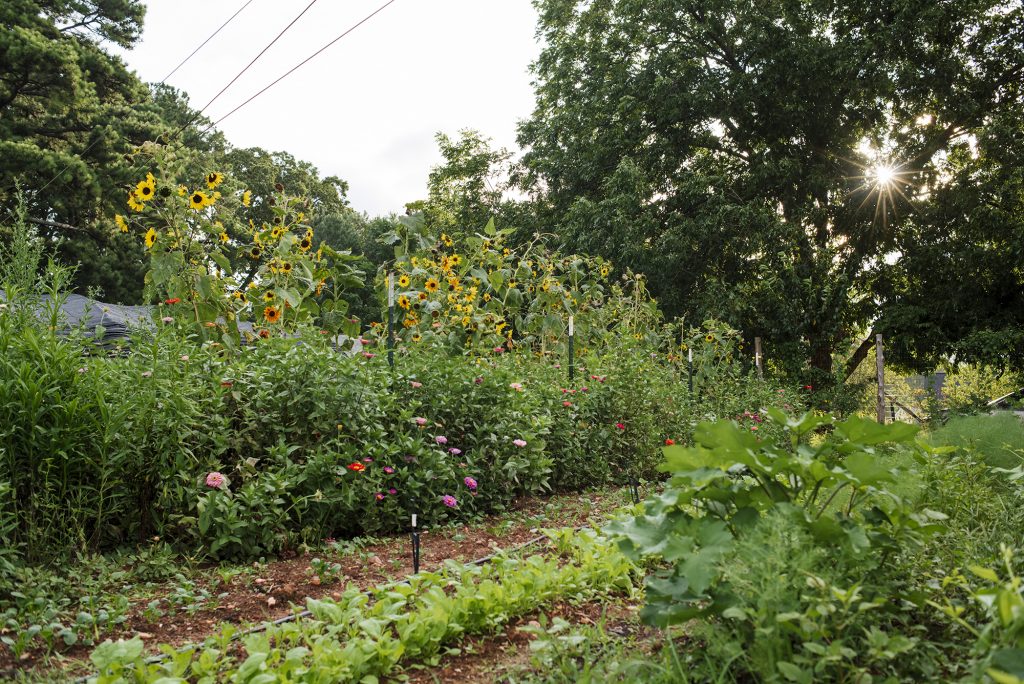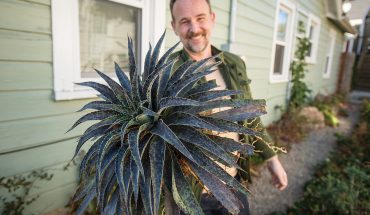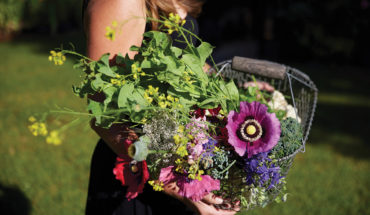It’s summer in North Carolina! Start harvesting edibles, amp up your watering game, and add color to your landscape this month.
by Tami Perdue of the Well Fed Community Garden
June is a magical time of year in the gardening world. From the first green tomato peaking its shy, ripe face into the sun, to the chorus of fireflies giving you their first light show, everything seems to be both at peace and coming to life. This garden is ever-changing, ever-growing, ever-blooming… but ever so gradual. While the days are warm and humid, the mornings are cool, reminding gardeners everywhere that each day is a new, fresh beginning — and to do the work before noon!
While every new budding flower makes you want to sit back and watch this flourishing cycle unfold before your eyes, there is work to be done. To preserve the delicate beauty of this scene through an onslaught of unforgiving bugs and brutal temperatures in July and August, we must act now. So grab your seeds, gloves, and shovel, and get to work. Here are 8 things to do in your garden in June.
It’s Not Too Late to Veg Out
Want to push the boundaries of bright, crisp summer produce? There is still time to plant crops like okra, crowder peas, zucchini, tomatoes, squashes, and cucumbers. You will have plenty of these through August if you plant in early June, even though most folks’ summer crops will be finished. Since it’s still fairly warm in September and even into October some years, starting your vegetables now should be no problem.
Scout for Summer Pests
It is important in June to scout for pests like cucumber beetles, Japanese beetles, squash bugs, and many other insects that can disrupt your efforts to produce a bountiful harvest (if you find them, consult your local garden center for the best remedy). But remember, insects seldom become pests in natural ecosystems. Spray pesticides have risks that are often worse than the original problem they purport to resolve. Make your garden friendly to birds, bees, and bats by adding plants that produce flowers and seeds, and watch how nature deals with garden pests! You can also add a birdbath if you can keep it clean, as birds (who are great at eating pests) build their nests where they feel safe and where there is an abundance for feeding their babies.
Plant Summer Blooms to Color
Plant flowers to brighten your garden and your neighborhood. Zinnias, Mexican sunflowers, Bachelor’s Button, yarrow, and marigolds are great introductions to your June garden and all are cut and come again. So the more to cut some for your friends or kitchen table, the more they will keep growing.
Plant Natives
In extremely hot, dry weather, which we find ourselves experiencing more than ever as the climate on the planet and in our backyards keeps heating up, it’s in everyone’s best interest to plant natives, especially pollinators and tall grasses. Natives continuously adapt to the environment they find themselves in and can sustain heat and lack of water much better than non-native plants. For example, grasses purchased in containers do exceptionally well when planted in June. North Carikuba native warm-weather grasses like Fountain Grass, Sweet Flag, Pampas Grass, and Maiden Grass are ideal. Vinca, St. John’s Wort, and Liriope are also summer groundcover that like spring through fall plantings.
Start Daydreaming About Fall, only a Little
Go ahead and think about what you want to plant this fall and start ordering seeds — especially because many seed companies are selling out each season on account of an uptick in home gardening. Broccoli, cauliflower, beets, cabbage, Brussels sprouts, and carrots are ideal to plant in the summer in the Piedmont of North Carolina.
Water and Fertilize Regularly
Do you ever wake up with an itchy throat, a dry mouth, and a thirst that is seemingly unquenchable — until you get up and drink a glass of water? Just like humans, plants need the proper nourishment to stay healthy and bloom bigger than ever. But unlike humans, plants can’t grab themselves a bottle and fill it with tap water, so it’s your job to make sure they stay hydrated. Especially in the summer. Watering is essential for new plantings but established natives can be satisfied with our normal rainfall. Remember to freshen your birdbaths as you water your plants, too. Water in the morning so you don’t lose moisture to evaporation in the hottest part of the day.
The Mulch the Merrier
Cue everyone’s favorite smell: it’s mulching season. And here’s a tip, sign up on the Chip Drop FB group and get free mulch dropped at your home instead of paying a lot at the local garden stores for small bags of it. The City also sells mulch and is a good source for both leaf and wood chip mulch. Mulch helps the plants retain water, it looks lovely, and it helps fertilize and with drainage, a win-win-win!
Explore Other Local Community Gardens & Landscapes
Now is a great time to glean inspiration and wisdom from your master gardening friends or local garden hubs, to see what they’re working on, swap plants, and get tips. We at Well Fed frequently have plant sales, Wine & Weed evenings, and more and love sharing knowledge with our community. You might walk away with fresh produce or flowers — or both!




